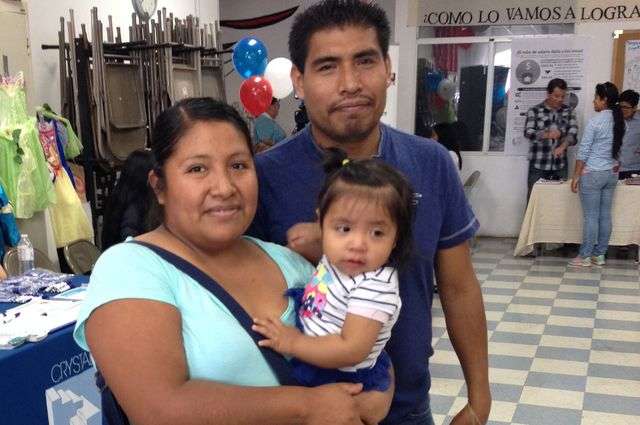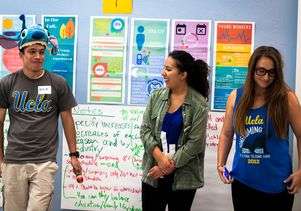UCLA students detail L.A. garment workers' child care issues

Katherine Rocio Herrera, a fourth-year student at UCLA and native of Colombia, came to the United States with her family when she was 9 years old. For her parents, finding a job in a new country was half the battle. The other was paying the high costs of child care so they could go to work. To fill in the gap, Herrera often looked after her younger sister while her parents worked.
So when Herrera joined UCLA's Labor Studies Applied Research Methods class last spring quarter and found that the class project focused on child care, it reminded her of her own family's experience. The class worked together to develop research tools and survey garment workers about how they coped with child care needs. "The garment workers I surveyed made me think of my parents' own struggle. It's not easy to work long hours and still not make enough to pay for child care," said Herrera.
The survey was part of a research project led by the UCLA Labor Center, the Garment Worker Center and Research Action Design to identify barriers that prevent garment workers from accessing quality child care.
The Labor Studies Applied Research Methods course is designed to introduce students to basic social science research methods by immersing them on a hands-on research project, where they provide research support to local community organizations. Students have partnered with organizations like the East Los Angeles Community Corporation, Loncheros Association and Building Skills Partnership.
"The quality of research that undergraduate students are able to produce in a single quarter is outstanding," said Gaspar Rivera-Salgado, a project director of the UCLA Labor Center who teaches the course annually. "This approach to teaching research allows students to develop a very real understanding of the critical debates around the socioeconomic context impacting workers and their communities."

To start, Herrera and her peers first gathered at the Garment Worker Center for a series of training sessions to learn about basic research methods and survey implementation. They then met with garment workers to practice their surveying skills and exchanged strategies for recruiting survey participants.
"We wanted the students to learn how to engage community members in the research process to develop effective and meaningful results," said UCLA Labor Center project coordinator Natalia Garcia, one of the lead researchers on the project.
Once students were ready, they formed teams of two and waited outside garment factories in the L.A. Fashion District to talk to workers.
"At first, it was really intimidating to approach strangers in the streets," said Herrera. "But once I told workers I was a university student conducting research on their child care needs, they were more willing to talk to me. Some were even surprised that I would be interested in what they had to say."
Many workers talked about not being able to afford quality child care and about the lack of child care centers in and around their communities, especially during the evening hours when they worked. Others repeatedly shared how they were unable to pay for formal child care and had to leave their children with a family member or neighbor whom they would compensate with whatever they could scrape together for the day.
Students learned firsthand about workers' experiences as well as gained important research skills. Over the three-month period of the project, students collected a total of 85 surveys. The findings were eye-opening, Garcia said.
They found that garment workers typically spent 1/3 of their weekly income on child care. To manage the demands of family and work, garment workers often depended on friends and neighbors (43%) and relatives (40%) to provide child care. And 42% of workers missed work because their child care providers were unavailable or canceled during work hours.
The UCLA's labor studies minor typically offers Applied Research Methods in the spring, yet many other courses in the minor use a similar structure to engage students in participatory research projects. This fall, Janna Shadduck-Hernandez, a project director of the UCLA Labor Center, will teach a course on social movements and labor in Los Angeles that will help students develop skills in visual-anthropological research methods, quantitative survey analysis and archival research.
More information: "Hanging by a Thread! Los Angeles Garment Workers' Struggle to Access Quality Care for their Children": www.labor.ucla.edu/downloads/h … -for-their-children/
Provided by University of California, Los Angeles















